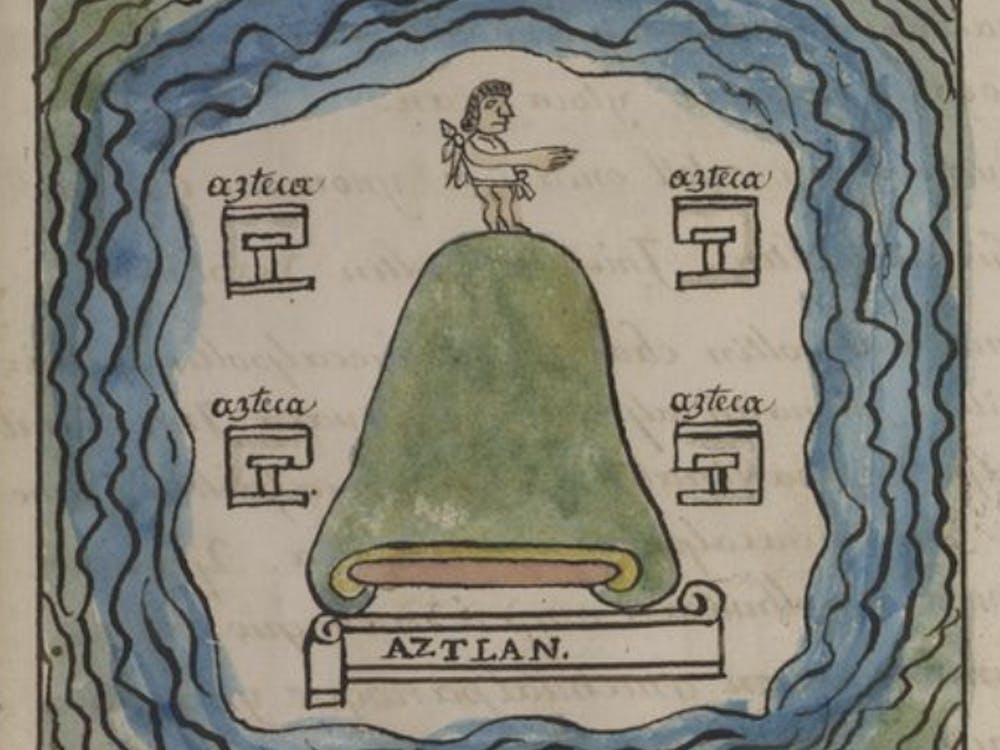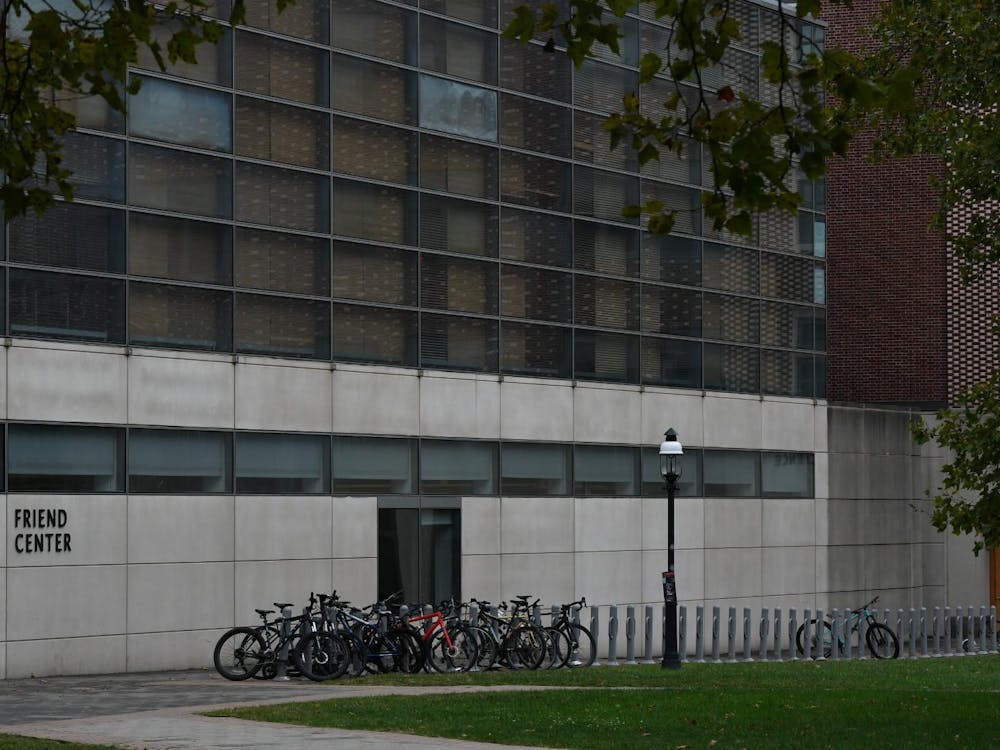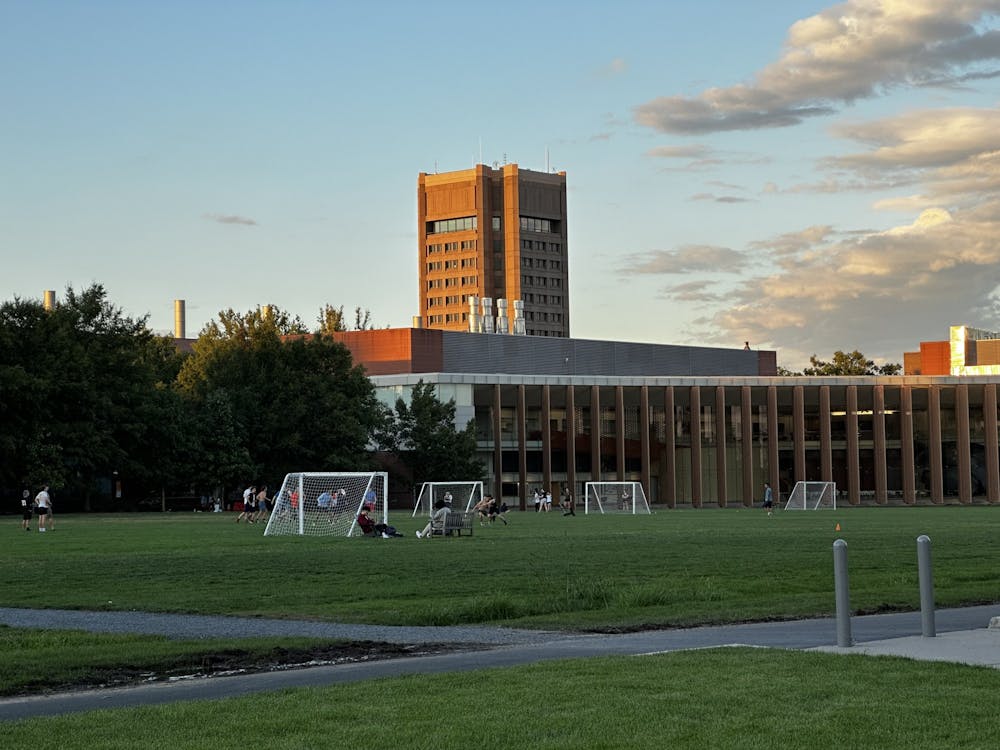In a corner of campus where gothic, colonial and modern architecture collide, a throwback to the Parthenon stands in a monumental, classical plaza. Though the majority of Princeton buildings conform to an overarching style of grand avenues and courtyards, Robertson Hall, home of the Wilson School, wasn’t designed to blend in. It was built to announce the University’s commitment to democracy and public service. While Robertson Hall’s self-importance clashes significantly with the complementary situation of the majority of campus buildings, in many ways it successfully fulfills its mission as a temple of democracy.
Named after Charles Robertson, heir to the A&P fortune, Robertson Hall was initially conceived as a monumental building so as to distinguish the Wilson School from the politics department, according to Princeton historian W. Barksdale Maynard ’88. Inaugurated in 1966, the building was designed by Minoru Yamasaki, the architect of the former World Trade Center.
Critics of the building cite the wall that forms a barrier between Scudder Plaza and 20 Washington Road, the former Frick Chemistry Building, as a symptom of the building’s modernist self-celebration. Others complain about the style of the building. According to Maynard’s book, “Princeton: America’s Campus,” novelist Walter Kirn went so far as to describe the building’s columns as “vertical drips of Elmer’s glue.”
University architect Ron McCoy GS ’80 explained that the style of Robertson Hall reflects the era of its construction.“Yamasaki was working in the style of New Formalism,” McCoy said, describing the style as “a postwar, post-international style characterized by idealistic, rational and monumental form.”
The New Formalist style encourages the design of open plazas characteristic of Yamasaki’s design, which function as community spaces as well as pedestrian pathways.“The Plaza is a wonderful gateway to campus [from] the north and south on Washington Road, and [forms a pedestrian corridor] moving east and west,” McCoy explained. “It’s a fabulously popular space for the University and community.”
While the University community values Robertson Hall and Scudder Plaza, the complex is less representative of the collegiate gothic style associated with Princeton architecture. “To alumni it’s recognizable. To the outside world, [it’s a] bank headquarters,” Maynard said, explaining the dissociation of New Formalism with academic function. When production companies represent the University on film, directors rarely choose to feature Robertson Hall, according to Maynard.
Robertson Hall and Scudder Plaza are currently being modified to better respect the situations of neighboring buildings, in particular 20 Washington Road, which is being repurposed as a new home for the Department of Economics, according to the Princeton Facilities webpage. The planned renovation features an addition that will form a pedestrian bridge connecting to Scudder Plaza. In addition, the barrier separating the Plaza from 20 Washington Road is currently under renovation to open Scudder Plaza to neighboring buildings. The University hopes to complete the project by summer 2016.
The “Circle of Animals / Zodiac Heads” statues by Chinese dissident artist Ai Weiwei will be on display in front of Robertson Hall’s columns until June 18, 2015,despite their current state in a protective plastic wrapping for the remainder of construction, according to a University webpage.
The open plaza spaces celebrated by New Formalism offer suitably public venues for political art, such as Ai Weiwei’s statuary, which helps to promote the Wilson School’s democratic mission. While Robertson Hall may be anomalous in the context of Princeton’s architectural language, its compatibility with the building’s users should not be understated.
“The classical language is the language of democracy in this country; [it’s] the language of Washington, D.C.,” McCoy said. “That’s why [Robertson Hall] has that monumental character. It’s an iconic fit between that language and the mission of the Woodrow Wilson School.”









